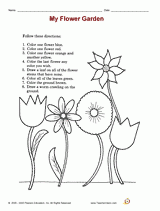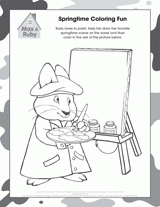Use a School Readiness Activity to provide early mathematics thinking experiences for preschool children that will prepare them to do well in the early grades.
Grades:
Subjects:
Sharing One Graham Cracker Equally
Please Note: this material was created for use in a classroom, but can be easily modified for homeschooling use.
Purpose/Skills
- To share one thing equally
- To experience the concept of one half
- To use the strategy of show with objects
Materials
Real or paper crackers, safety scissors, paper geometric shapes (see Enrichment)
Prepare paper cutouts ahead of time.
Read The Tale of Peter Rabbit by Beatrix Potter, or another book that can illustrate sharing. After reading the book, ask children to talk about how the four rabbit children could share a bowl of blackberries.
Vocabulary
share
the same amount
one half
one
Warm-Up
Draw a circle on a board or chart paper. Tell children that the circle is a pie and that you are going to cut the pie into 2 pieces. Draw a line dividing the circle in half. Touch each section and say, "1 piece, 2 pieces, now there are 2 pieces of pie."
Procedure
- Tell children that they are going to be sharing crackers and that everyone should have a fair share--the same amount. Have children work in pairs. Give each pair one real or paper cracker. Tell children that one cracker can be shared by cutting or breaking it in half. Show children that breaking a cracker in half (or that folding and cutting a paper square in half) gives each person one half of a cracker.
- Give each pair of children another set of squares, to give the other partner practice folding and cutting into halves. Encourage children to explain to each other that halves are two parts of a whole.
Set up a station with paper shapes such as circles, squares, rectangles, equilateral triangles, or hexagons that can be easily divided into halves. Help children explore folding and cutting the shapes into 2 equal parts. Help them discover that a square, for example, can be cut diagonally to yield equal halves.
Observation Assessment
- Proficient - Child can show how to divide a square or a circle in half, and can explain that halves are two parts of a whole.
- In Process - Child participates and can fold and cut a square in half, but can't explain the meaning of one half.
- Not Yet Ready - Child is reluctant to participate in folding and cutting, and is not yet ready for the concept of one half.












